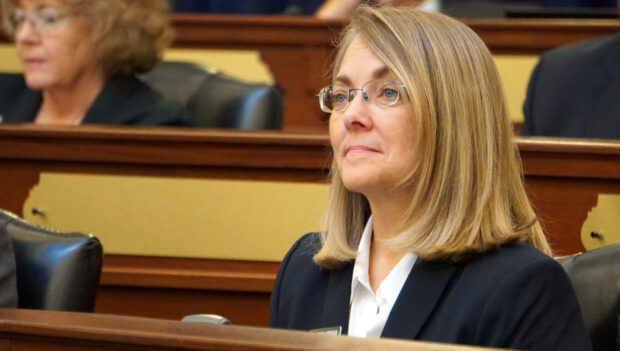State revenues beat projections in April, easing some of the cashflow and revenue concerns that clouded over the recent legislative session.
But year-to-date revenues continue to lag behind forecasts. That means legislators might have less money available to carry over into the 2020 budget.
According to statistics released Tuesday by the Division of Financial Management, April revenues came in $36.1 million ahead of projections. The $706.2 million in revenues was about 5.4 percent higher than the month’s forecast of $670.2 million.
Even with a strong April, state revenues trail year-to-date projections by 1.3 percent as the state enters the final two months of the fiscal year (Idaho’s fiscal year begins on July 1). If revenues meet forecasts for May and June, state revenues would come in about 1.1 percent below fiscal year 2018, according to the Legislative Services Office General Fund Monitor.
Even with April’s strong collections, the state may still fall short of projections, said Rep. Wendy Horman, a vice chair of the Joint Finance-Appropriations Committee.

“April is always our biggest revenue month so that is good news,” said Horman, R-Idaho Falls. “With that said, I don’t expect us to make up the difference. It doesn’t look to me like we will meet our revenue target for the year.”
State revenues are important in education circles because public schools are the largest expense in the general fund budget each year. When revenues are down, the competition for scarce resources intensifies, as lawmakers tighten budgets.
Through March, the state faced a fiscal year-to-date shortfall of $75.8 million versus projections. April’s revenue collections cut that shortfall to $39.7 million.
“This strong showing significantly reduced the fiscal year-to-date revenue shortfall compared to the previous month,” DFM officials wrote in the Idaho General Fund Revenue Report.
April’s report follows several consecutive months of revenue shortfalls, which officials attributed in part to changes in the tax withholding tables.
For months, Idaho State Tax Commission officials predicted revenue shortfalls would be offset at Tax Day. Because of withholding changes, more Idahoans were expected to owe state taxes in April, while others would receive smaller refunds.
Those predictions partially appear to be coming true. Filing collections exceeded forecasts, while refunds were actually higher than expected, DFM officials wrote.
The revenue picture could affect the budget in several ways. When the Legislature adjourned the 2019 session on April 11, it left a large ending balance and planned to carry over $121.9 million into the 2020 budget. The projected ending balance is now down to $82.1 million.
A cash carryover is nice, but Horman warned that a carryover is one-time in nature, as opposed to a reliable, ongoing source of funding.
And even with a strong month, individual income tax collections are short of year-to-date projections by $91 million. Individual income tax receipts are a larger source of revenue than the sales tax and corporate income taxes combined, so Horman will watch collections closely.
“Clearly our withholding numbers are still off,” Horman said. “So I think the question will be, is this our new normal?”
